Government of Kerala
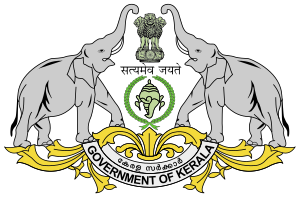 | |
| Seat of Government | Kerala Government Secretariat, Thiruvananthapuram |
|---|---|
| Website | kerala |
| Legislative branch | |
| Assembly | |
| Speaker | A. N. Shamseer, CPI(M) |
| Deputy Speaker | Chittayam Gopakumar, (CPI) |
| Members in Assembly | 140 |
| Meeting place | Niyamasabha Mandiram, Thiruvananthapuram |
| Executive branch | |
| Governor (Head of the state) | Rajendra Arlekar |
| Chief Minister (Head of the government) | Pinarayi Vijayan, CPI(M) |
| Chief Secretary | Sarada Muraleedharan, IAS[1] |
| Headquarters | Kerala Government Secretariat, Thiruvananthapuram |
| Departments | 44 |
| Judiciary | |
| High Court | High Court of Kerala |
| Chief Justice | Nitin Madhukar Jamdar |
| Seat | Kochi |
The Government of Kerala (abbreviated as GoK), also known as the Kerala Government, is the administrative body responsible for governing the Indian state of Kerala. The government is led by a chief minister, who selects all the other ministers. The chief minister and their most senior ministers belong to the supreme decision-making committee, known as the cabinet.
Ministers of the Kerala government are responsible to the Kerala Legislative Assembly; they make statements in the assembly and take questions from members of the assembly. The government is dependent on Kerala Legislative Assembly to make primary legislation. Legislative assembly elections are held every five years to elect a new assembly, unless there is a successful vote of no confidence in the government or a two-thirds vote for a snap election in the assembly, in which case an election may be held sooner. After an election, the governor selects as chief minister the leader of the party most likely to command the confidence of the assembly, usually by possessing a majority of MLAs.
Under the Indian constitution, executive authority lies with the governor, although this authority is exercised only by, or on the advice of, the chief minister and the cabinet. In most cases, the cabinet members exercise power directly as leaders of the government departments, though some cabinet positions are sinecures to a greater or lesser degree.
Executive branch
[edit]Governor
[edit]The governor is appointed by the President for a term of five years. The executive and legislative powers lie with the Chief Minister and his council of ministers, who are appointed by the governor. The governors of the states and territories of India have similar powers and functions at the state level as that of the president of India at the national level. Only Indian citizens above 35 years of age are eligible for appointment. Governors discharge all constitutional functions, such as the appointment of the chief minister, sending reports to the president about failure of constitutional machinery in a state, or with respect to issues relating to the assent to a bill passed by legislature, exercise or their own opinion.[2]
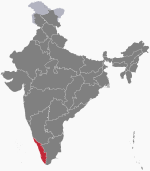
Rajendra Arlekar is the present governor.
The governor enjoys many different types of powers:
- Executive powers related to administration, appointments, and removals
- Legislative powers related to lawmaking and the state legislature
- Discretionary powers to be carried out according to the discretion of the governor
Kerala Council of Ministers
[edit]
Like in other Indian states, the executive arm of the state is responsible for the day-to-day management of the state. It consists of the governor, the chief minister and the Council of Ministers (also known as cabinet). The chief minister and the council of ministers also have been appointed by the governor. The governor summons prorogues and dissolves the legislature. He can close the legislative assembly on the recommendation of the chief minister. Judiciary has been separated from the executive in Kerala like other Indian states.
The executive authority is headed by the Chief Minister of Kerala, who is the de facto head of state and is vested with most of the executive powers; the Legislative Assembly's majority party leader is appointed to this position by the Governor. The present Chief Minister is Pinarayi Vijayan, who took office on 25 May 2016. Generally, the winning party decides the chief minister. In many cases, the party focuses a chief ministerial candidate during the election.
The Council of Ministers, which answers to the Legislative Assembly, has its members appointed by the Governor; the appointments receive input from the Chief Minister. They are collectively responsible to the legislative assembly of the State. Generally, the winning party and its chief minister chooses the ministers list and submit the list for the Governor's approval.
Current council of ministers
[edit]The incumbent chief minister of Kerala is serving his second consecutive term, and was sworn into power on 20 May 2021. The oath-taking ceremony was held at the Central Stadium. The Kerala Governor administered the oath of office and secrecy to the new members. In December 2023, the Kerala Cabinet underwent a reshuffle as part of a mutual agreement among member parties. The reshuffling is in accordance with a pre-election agreement within the Left Democratic Front (LDF) coalition. Transport Minister Antony Raju and Ports and Archaeology Minister Ahmed Devarkovil resigned, leading to the appointment of K.B Ganesh Kumar as the new Minister for Transport and Kadannappalli Ramachandran as the Minister for Registration and Archeology.[3]
| S.No | Name | Portrait | Constituency | Designation | Department | Party | State Car Number |
|---|---|---|---|---|---|---|---|
| 1. | Pinarayi Vijayan | 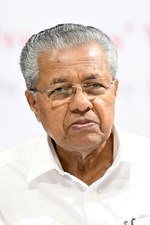
|
Dharmadom | Chief Minister |
|
CPI(M) | 1
|
| Cabinet Ministers | |||||||
| 2. | Adv. K. Rajan | 
|
Ollur | Minister for Revenue and Housing |
|
CPI | 2
|
| 3. | Roshy Augustine | 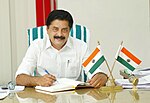
|
Idukki | Minister for Water Resources |
|
KCM | 3
|
| 4. | K. Krishnankutty | 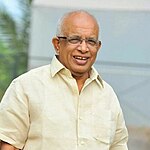
|
Chittur | Minister for Electricity |
|
JD(S) Kerala | 4
|
| 5. | A. K. Saseendran | 
|
Elathur | Minister for Forest and Wildlife |
|
NCP | 5
|
| 6. | Kadannappalli Ramachandran | 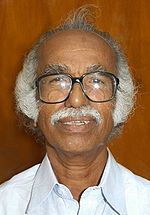
|
Kannur | Minister for Registration,Museum Archaeology & Archives |
|
Congress (S) | 6
|
| 7. | K. B. Ganesh Kumar | 
|
Pathanapuram | Minister for Transport |
|
KC(B) | 7
|
| 8. | V. Abdurahiman | 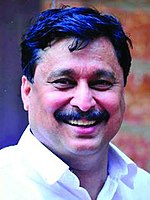
|
Tanur | Minister for Sports, Wakf and Haj Pilgrimage, Minority welfare |
|
NSC | 21 |
| 9. | G. R. Anil | 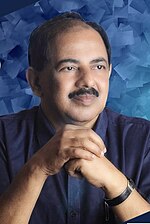
|
Nedumangad | Minister for Food and Civil Supplies |
|
CPI | 19
|
| 10. | K. N. Balagopal | 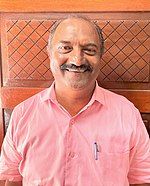
|
Kottarakkara | Minister for Finance |
|
CPI(M) | 10
|
| 11. | R. Bindu | 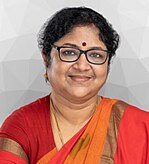
|
Irinjalakuda | Minister for Higher Education and Social Justice |
|
CPI(M) | 18
|
| 12. | J. Chinchu Rani | 
|
Chadayamangalam | Minister for Animal Husbandry and Dairy Development |
|
CPI | 14
|
| 13. | M.B Rajesh | 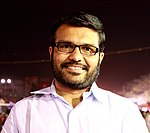
|
Thrithala | Minister for Local Self Governments, Rural Development and Excise |
|
CPI(M) | 9
|
| 14. | P. A. Mohammed Riyas | 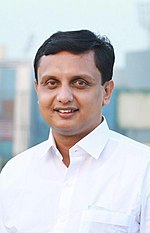
|
Beypore | Minister for Public Works and Tourism | CPI(M) | 17
| |
| 15. | P. Prasad | Cherthala | Minister for Agriculture |
|
CPI | 13
| |
| 16. | O. R. Kelu | 
|
Minister for Welfare of Scheduled Castes, Scheduled Tribes and Backward Classes. |
|
|||
| 17. | P Rajeev | 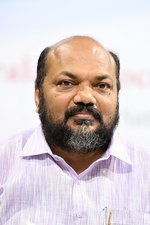
|
Kalamassery | Minister for Law, Industries and Coir |
|
CPI(M) | 11
|
| 18. | Saji Cherian | 
|
Chengannur | Minister for Fisheries, culture & youth affairs |
|
CPI(M) | 8
|
| 19. | V. Sivankutty | 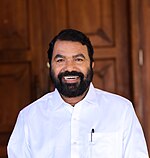
|
Nemom | Minister for General Education and Labour |
|
CPI(M) | 16
|
| 20. | V. N. Vasavan | 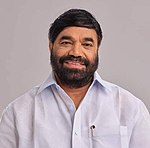
|
Ettumanoor | Minister for Co-operation |
|
CPI(M) | 12 |
| 21. | Veena George | 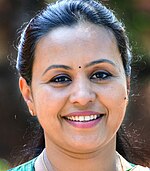
|
Aranmula | Minister for Health and Woman and Child Development |
|
CPI(M) | 20
|
Legislative branch
[edit]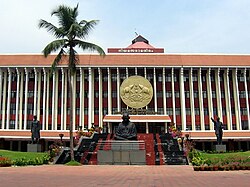
The legislature comprises the governor and the legislative assembly, which is the highest political organ in the state. The governor has the power to summon the assembly or to close the same. All members of the legislative assembly are directly elected, normally once in every five years by the eligible voters who are above 18 years of age. The current assembly consists of 140 elected members and one member nominated by the governor from the Anglo-Indian community. The elected members select one of its own members as its chairman who is called the speaker. The speaker is assisted by the deputy speaker who is also elected by the members. The conduct of a meeting in the house is the responsibility of the speaker.
The main function of the assembly is to pass laws and rules. Every bill passed by the house has to be finally approved by the governor before it becomes applicable.
The normal term of the legislative assembly is five years from the date appointed for its first meeting. But while a proclamation of state of emergency is in operation, the said period will be extended by Parliament by Laws for a period not exceeding one year at a time.[4]
Administrative divisions
[edit]| State administrative structure | |
|---|---|
| Administrative divisions | Total |
| Districts | 14 |
| Revenue Divisions | 27 |
| Taluks | 75 |
| Revenue Villages | 1453 |
| Local-Self Governments[5] | Numbers |
|---|---|
| District Panchayats | 14 |
| Block Panchayats | 152 |
| Grama Panchayats | 941 |
| Municipal Corporations | 6 |
| Municipalities | 87 |
| Electoral constituencies | Numbers |
|---|---|
| Lok Sabha constituencies | 20 |
| Legislative assembly constituencies | 140 |
For administrative convenience, Kerala State has been divided into 14 districts, 27 revenue divisions, 75 taluks, 152 CD blocks, and 1453 revenue villages. For local governance, the state has 941 gram panchayats, 152 block panchayats, 14 district panchayats, 6 corporations, and 87 municipalities.[6]
Departments
[edit]The business of the state government is transacted through the various secretariat departments based on the rules of business. Each department consists of secretary to the government, who is the official head of the department and such other deputy secretaries, under secretaries, junior secretaries, officers, and staffs subordinate to him/her. The Chief secretary superintending control over the whole secretariat and staff attached to the ministers.
The department is further divided into sections, each of which is under the charge of a section officer. Apart from these sections, dealing with the subjects allotted to them, there are other offices sections, assigned with specific duties. When there is more than one secretary in a department, there shall be a clear separation of work.[7]
At present there are 44 Secretariat Departments as below:
- Agricultural Development and Farmers Welfare Department[8]
- Animal Husbandry Department
- Ayurveda, Yoga and Naturopathy, Unani, Siddha and Homeopathy[9] (AYUSH) Department
- Archaeology Department
- Backward Communities Development Department
- Department of Coastal Shipping and Inland Navigation
- Co-operation Department
- Department of Consumer Affairs
- Department of Cultural Affairs
- Department of Dairy Development
- Department of Environment
- Department of Election
- Department of Electronics and Information Technology
- Excise Department
- Finance Department
- Fisheries and Ports Department
- Forests and Wildlife Department
- Food and Civil Supplies Department
- General Education Department
- General Administration Department
- Higher Education Department
- Home Department
- Health and Family Welfare Department
- Housing Department
- Industries and Commerce Department
- Information & Public Relations Department
- Labour and Skills Department
- Law Department
- Local Self-Government Department
- Minority Welfare Department
- Non Resident Keralites Affairs (NORKA) Department[10]
- Planning and Economic Affairs Department
- Personnel & Administrative Reforms Department
- Parliamentary Affairs Department
- Power Department
- Public Works Department
- Registration Department
- Revenue Department
- Sainik Welfare Department
- Science & Technology Department
- Social Justice Department
- Sports & Youth Affairs Department
- Scheduled Castes Development Department
- Scheduled Tribes Development Department
- Stores Purchase Department
- Taxes Department
- Tourism Department
- Transport Department
- Vigilance Department
- Water Resources Department[11]
- Women and Child Development Department
- Western Ghats Cell
Out of these 44 Secretariat Departments, 42 (aside from the Finance and Law Departments) are commonly referred to as Administrative Departments and are referred to as Administrative Secretariat collectively for administrative convenience and in light of the functions that are distributed among them. The Secretaries in charge of various departments are typically All India Service officers who are members of the Indian Administrative Service and may have the rank of Additional Chief Secretary, Principal Secretary, or Secretary.
In addition to the Secretariat department, the State Government operates various field departments that function under the purview of their respective Secretariat department. These field departments form an integral part of the administrative structure, working in conjunction with the Secretariat to effectively implement government policies and initiatives at the grassroots level. Line departments (field departments) which are distinct from the Secretariat but operate under almost the same name as the Secretariat dept are commonly known as Directorates and Commissionerates.
State insignias
[edit] | |
| Language | Malayalam |
|---|---|
| Bird | Great Indian hornbill |
| Fish | Pearlspot (karimeen) |
| Flower | Cassia fistula (Indian laburnum) |
| Fruit | Jackfruit |
| Mammal | Elephant |
| Tree | Coconut |
| Costume | Mundum neriyathum (women) Mundu (men) |
The Kerala State Emblem is a derivative version of the royal coat of arms of the Kingdom of Travancore. The state emblem symbolises two elephants guarding the Imperial Shanku, or conch, in its imperial crest. This crest was the insignia of Lord Sree Padmanabha (a form of Lord Vishnu) - the national deity of Travancore. Shanku was considered one of the common emblems of a majority of the Kerala feudal kingdoms. The Kingdom of Cochin and Zamorin's Malabar also had conch as state emblems. When the kingdoms of Cochin and Travancore merged in 1949, for a brief period, the crest carried a wheel or chakra in the centre with Shanku on top of it. With the accession of Malabar into Travancore-Cochin, the state of Kerala was formed in 1957. During this time, the royal coat of arms of the Travancore kingdom was modified by placing the "Lion Capital of Ashoka" on top of the imperial conch. The Travancore Royal Family uses the erstwhile Royal Coat of Arms of Travancore today, whereas Sree Padmanabhaswamy Temple of Trivandrum uses only the imperial conch crest as its coat of arms.
The state animal of Kerala is the elephant, and the government emblem has two elephants in it. The state bird is the great Indian hornbill (ML:മലമ്പുഴക്കി വേഴാമ്പല്). The state flower is the golden shower (ML:കണിക്കൊന്ന), and the state tree is the coconut.[12] The state fish is the pearlspot or karimeen (കരിമീന്).
Elections
[edit]Elections to the state assembly are held every five years. Elections are generally held for Parliament, State assembly and regional panchayats. Due to the large numbers of eligible voters, over 21 million, elections are usually held on several dates. Like all other Indian states, the minimum age of registration of a voter is 18 years.
Politics
[edit]Kerala has a unique position in India as one of the most politicised states. It has the nation's largest politically aware population, which actively participates in state politics.
Politics in Kerala is dominated by two political fronts: the Communist Party of India (Marxist)-led Left Democratic Front (LDF) and the Indian National Congress-led United Democratic Front (UDF) since the late 1970s. These two coalitions have alternated in power since 1982, although this pattern was broken in 2021. According to the 2021 Kerala Legislative Assembly election, the LDF has a majority in the state assembly (99/140).
The political alliance has strongly stabilised and, with rare exceptions, most of the coalition partners maintain loyalty to the alliance. As a result of this, power has alternated between these two fronts since 1979.
In terms of individual parties, the state has strong leanings towards socialism and thus Communist parties have made strong inroads in Kerala. The Malabar region, particularly Kannur and Palakkad, are considered the heartland of the Communist parties. The Kollam and Alapuzha districts, where trade unions have a strong presence, are generally inclined to Left parties, though several times the UDF has won. The CPI(M) led LDF did a clean sweep of 11–0 over UDF and NDA in Kollam district during 2016 Local body election.[13] The largest Communist party is the CPIM and the second largest is the CPI.
The Indian National Congress, which leads the UDF coalition, has had a very strong presence in Kerala since pre-Independence days. The Congress party has great popularity in the Thrissur, Ernakulam, Kottayam, Pathanamthitta and Thiruvananthapuram regions, whereas it has a strong influence in some parts of Idukki regions.
The Bharatiya Janata Party (the Party that currently leads the Government of India) is also active in Kerala, but is not part of either coalition. It has only one elected Parliament member from Thrissur, and has lost its one Legislative Assembly member in the 2021 Kerala Legislative Assembly election and selected members in all the Corporations, several Municipal Councils and a large number of Local Panchayats. The party enjoys popularity in the districts of Thiruvananthapuram and Kasaragod.
Other popular regional parties are:
- The Kerala Congress, which has more than four denominations after breaking away from the original party. It has strong influence among settlement populations in hilly regions. The various Kerala Congress denominations are primarily patronized by the Syrian Christian community and Nair populations, mostly in Central Travancore areas like Kottayam, Idukki and Pathanamthitta. Today, most of Kerala Congress parties are with the UDF.
- The Indian Union Muslim League is a powerful pro-Muslim community-oriented party, which was started as the Muslim League prior to Independence, yet decided to transfer their allegiance to the Indian Union after Independence, when the original Muslim League went to Pakistan. The IUML-Kerala unit is the only Muslim League group to declare its allegiance and loyalty to India and hence become a state party in post-Independence India. The party has strongholds mostly in Muslim-dominated districts like Kozhikode, Malappuram and Kasargod. They form the second largest party within the UDF.
- Socialist groups, consisting of several small fragmented parties like the NCP (SP), SJD-S, JDS, and Congress-S, are mainly centre-left socialist parties having very limited influence in a few pocket areas. Most of the socialist groups are with the LDF, though in a few instances, some of them changed their loyalties to the UDF.
- Communist parties consist of various groups which have broken away from the CPIM. They are mostly centre-left parties, though a few are extreme-left. While a few centre-left parties like the RSP have joined with the UDF, those that broke away from the CPIM, like the CMP and JSS, led by erstwhile CPIM veterans who were expelled from CPIM, have joined with the UDF.
- The Bharath Dharma Jana Sena or BDJS is a new political party formed in 2015 led by Thushar Vellapally. The party's primary vote base is among Ezhava and Thiyya community. It is politically and ideologically aligned towards the BJP and is a part of National Democratic Alliance.
Awards and honours
[edit]Kerala was declared as the first complete digitally administered state of India on 27 February 2016.[14] The India Corruption Survey 2019 by Transparency International declared Kerala the least-corrupt state in India.[15] The state topped in the country to achieve the Sustainable Development Goals according to the annual report of NITI Aayog published in 2019.[16] The Public Affairs Index-2020 released by the Public Affairs Centre, India, designated Kerala as the best governed Indian state.[17]
References
[edit]- ^ >pages gad
.kerala .gov .in /index .php /contact-us>pages - ^ "The States". Government of India. Archived from the original on 23 March 2008.
- ^ "Kerala's Transport, Ports ministers resign, pave way for cabinet reshuffle". India Today. Retrieved 31 December 2023.
- ^ "Kerala Government - Legislature". Kerala Niyamasabha. Archived from the original on 8 December 2012. Retrieved 7 February 2022.
- ^ "Local Self Government Institutions | Deparyment of Panchayats". dop.lsgkerala.gov.in. Retrieved 27 May 2023.
- ^ "Local Self Government". Archived from the original on 11 April 2011.
- ^ "Organizational and functional details of the Government Secretariat". The official website, Government of Kerala. Archived from the original on 5 October 2010.
- ^ "Karshika Keralam – Department of Agriculture Development and Farmers' Welfare" (in Malayalam). Retrieved 7 February 2022.
- ^ "AYUSH (Ayurveda, Yoga & Naturopathy, Unani, Siddha & Homoeopathy) – National Health Mission". Archived from the original on 7 February 2022. Retrieved 7 February 2022.
- ^ "Home - NORKA". www.norkaroots.org. Retrieved 7 February 2022.
- ^ "Kerala State Portal". kerala.gov.in. Retrieved 7 February 2022.
- ^ "Kerala Symbols". kerenvis.nic.in. Archived from the original on 7 March 2008.
- ^ "Red wave trounces UDF in Kerala". The Hindu. 20 May 2016. Retrieved 22 January 2020.
- ^ Special currespondent (28 February 2016). "Kerala the first digital State". The Hindu. Retrieved 17 November 2020.
- ^ India Corruption Survey 2019 - Report (PDF). Transparency International India. 2019. p. 22.
- ^ Gireesh Chandra Prasad (30 December 2019). "Kerala tops sustainable development goals index". Livemint. Retrieved 4 December 2020.
- ^ PTI (30 October 2020). "Kerala, Tamil Nadu and Goa best governed States: report". The Hindu. Retrieved 20 June 2021.
Further reading
[edit]- Chief Ministers, Ministers, and Leaders of Opposition of Kerala (PDF), Thiruvananthapuram: Secratriat of Kerala Legislature, 2018
- Chandran, VP (2018). Mathrubhumi Yearbook Plus - 2019 (Malayalam Edition). Kozhikode: P. V. Chandran, Managing Editor, Mathrubhumi Printing & Publishing Company Limited, Kozhikode.
- Menon, A. Sreedhara (2007). A Survey of Kerala History. DC Books. ISBN 9788126415786.


